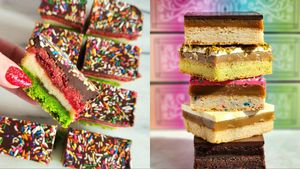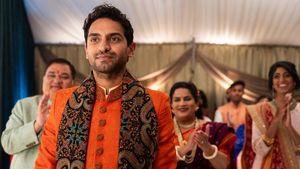Welcome to !Hola Papi!, the advice column where John Paul Brammer helps people work through their anxieties, fears, and life's queerest questions. If you need advice, send him a question at holapapiletters@gmail.com.
Dear Papi,
I'm a lesbian college student studying dance, and in a few months I have to perform a solo I'm choreographing about my experience with internalized homophobia. The piece deals with some really personal and painful material, and I don't quite know how I'll get the courage to perform it in front of an audience of clueless straight people. I've performed little parts of it for close friends, and I still felt so scared and vulnerable. My question is, how does any gay ever get the courage and the willpower to reveal their most difficult experiences with homophobia to a bunch of heteros?
Love,
Scared Gay Dancer(tm)
Hey there, SGD!
You know, I relate to you. Not because I'm a dancer or anything, but because I also make art. Mostly tweets, but also art sometimes. A concern I often have is that I'm too niche. I mean, "!Hola Papi!" is a name I got from being on Grindr, and most of my readers are LGBTQ+. Sometimes I think, "Do people outside the community even know what I'm talking about?"
Trending stories
I've come to find that the answer is yes and no. It's true that queer people share a vocabulary that can be alienating to cisgender heterosexual people. I mean, a lot of our culture has been shaped by a desire to get away from cishets, to escape their gaze. We also deal with unique life experiences that most non-LGBTQ+ people simply don't.
On the other hand, there's more universality in the human experience than we might think. I've written a lot about very specific things in my life: growing up Chicano, being gay in rural America, struggling with borderline personality disorder, and things of the like. While people don't always have those same experiences, they often have gone through something adjacent: discrimination, loneliness, joy, the whole gamut. It's part of being alive.
Art is powerful because it makes us vulnerable. It's putting your thoughts and feelings out into the world. That's an inherently scary thing, especially if most of the world isn't like you. I don't doubt that there will be people in your audience who won't "get" what you're doing. But there will be people, not all of them LGBTQ+, who do. And even for the ones who don't: What if they leave feeling challenged? What if, even though they weren't quite on the same page as you, it gets them a little closer to understanding? That's important! That's what good art does.
I hope you get up there and give them a great performance -- one that you can be proud of and expresses what you want to express. Performance is subjective. Sure, it might not land on some people the way you'd like. But just like I said while being escorted out of Jamba Juice for the umpteenth time: We can't control how people perceive our art. All we can do is continue to create.
This article appears in Out's May issue featuring artist Zanele Muholi and model Ruth Bell as cover stars. The issue is guest edited by Kimberly Drew. To read more, grab your own copy of the issue on Kindle, Nook, Zinio or (newly) Apple News+ today. Preview more of the issue here and click here to subscribe.

























































































I Make Queer Art. Do I Have to Think About Straight Audiences?
In this installment of our advice column !Hola Papi!, John Paul Brammer takes on the art world addressing the concerns of one woeful dancer.
John Paul Brammer